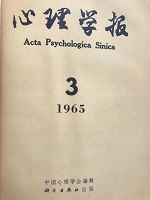|
|
OBSERVATION DISTANCE AND LENGTH TRAVERSED BY STIMULUS AS VARIABLES IN CONSTANCY OF VISUAL MOVEMENT
CHING CHI-CHENG, LIU WEN-MING
1965, 9 (3):
66-76.
Two moving light spots, the standard placed at a fixed distance of 1.5 m from the observer, the comparison varied from 1.5 m to 6 m along an alley, with the length traversed by the stimulus as another variable, were matched for equal perceived velocities both under direct observation and by displaying them on a television screen. The following results were obtained:1. When only one variable was changed, either observation distance or length traversed by the stimulus, the equated physical speed had to be only slightly increased as either one variable was increased. Consequently, under this condition, a constancy of perceived movement was maintained.2. When the two variables in question were changed simultaneously, the constancy phenomenon was greatly hampered and Ss matched the comparison speed in the direction of equal angular velocity with the standard.3. As an instance of the above result, by presenting the comparison speed to traverse the same visual angle at various distances from the eyes, the perceived speed fell between the constancy value and the physically predicted angular velocity, which followed a nearly linear relationship.4. An interchangable relationship was shown between a change in the length traversed by the stimulus under the same observation distance, on the one hand, and a change in the observation distance with the same traversed length, on the other hand. Similar results could be effected through a change in one variable in the place of the other.5. When the movements were displayed on a television screen, i.e., with the reduction of cues of distance, constancy of visual movement broke down completely, the perceived comparison speed coincided approximately with the physically predicted angular velocity.
Related Articles |
Metrics
|




